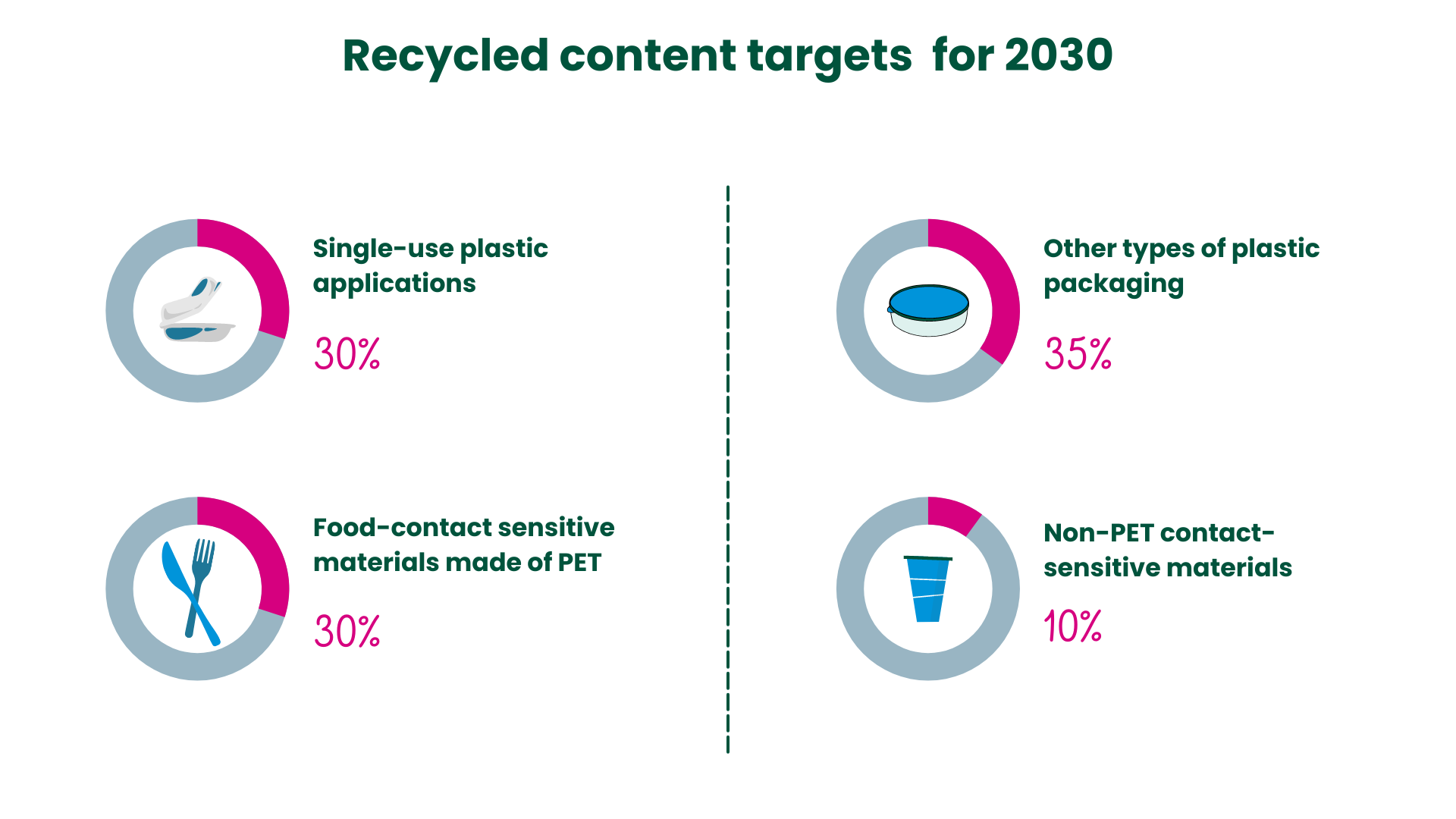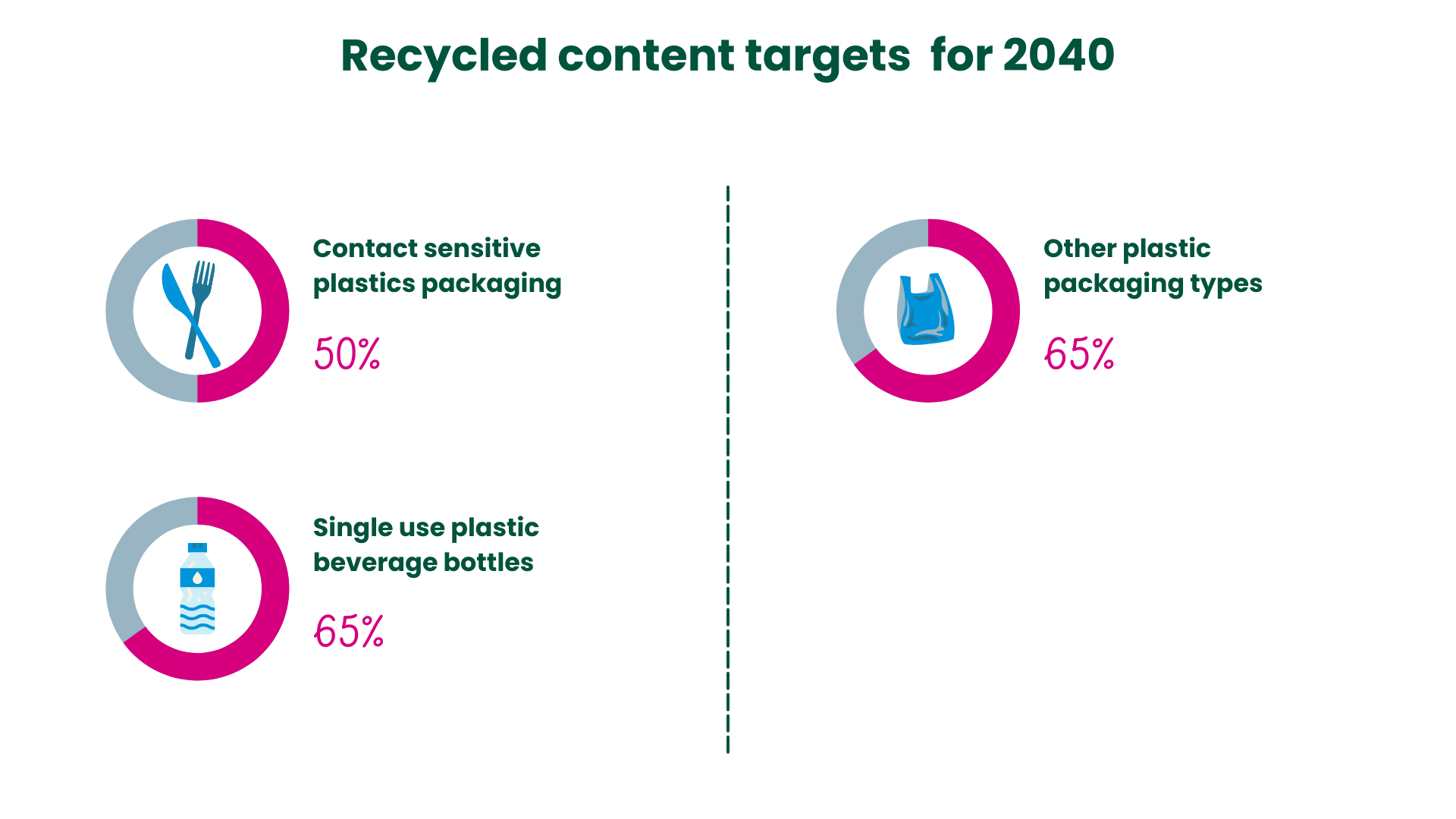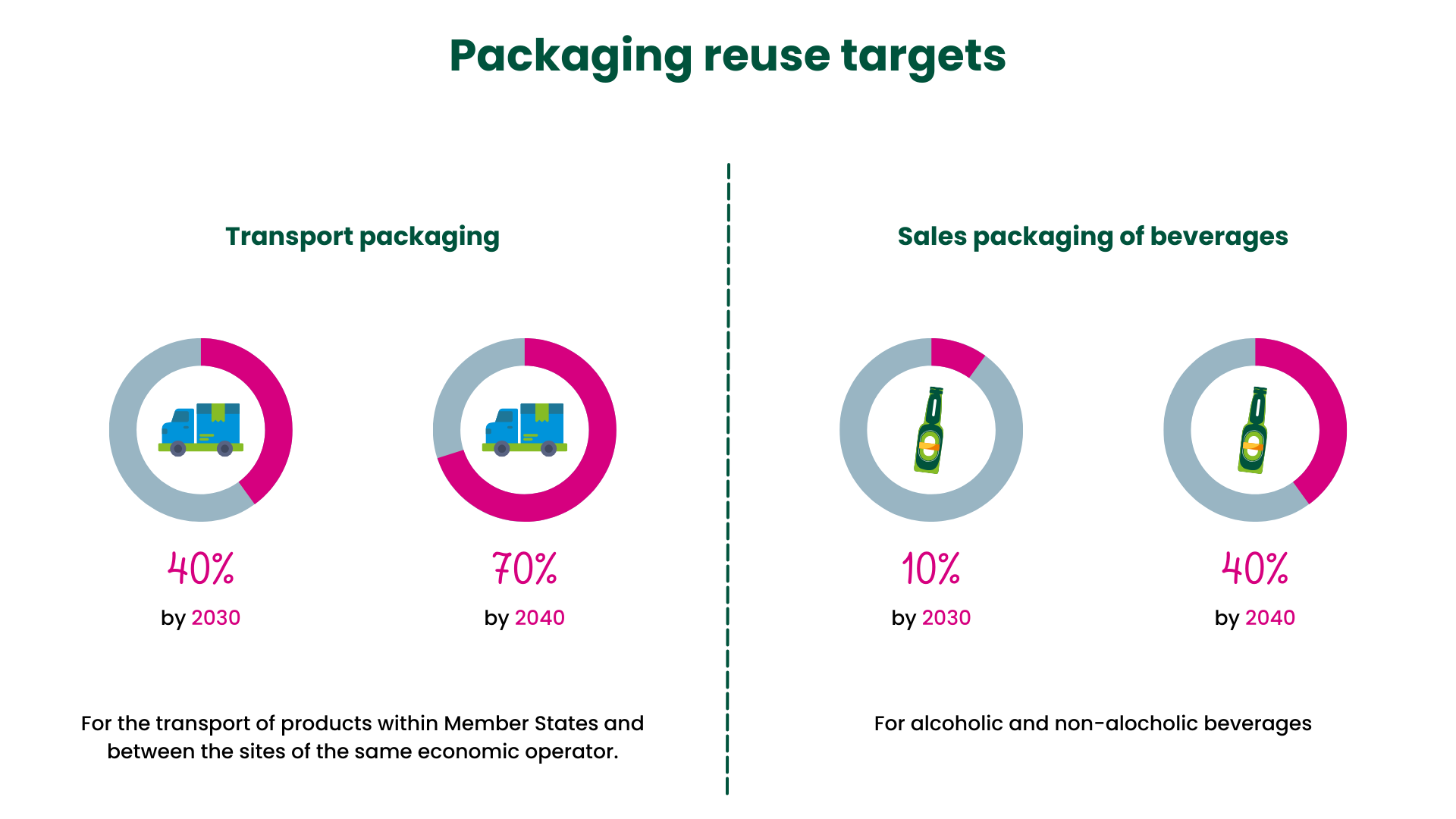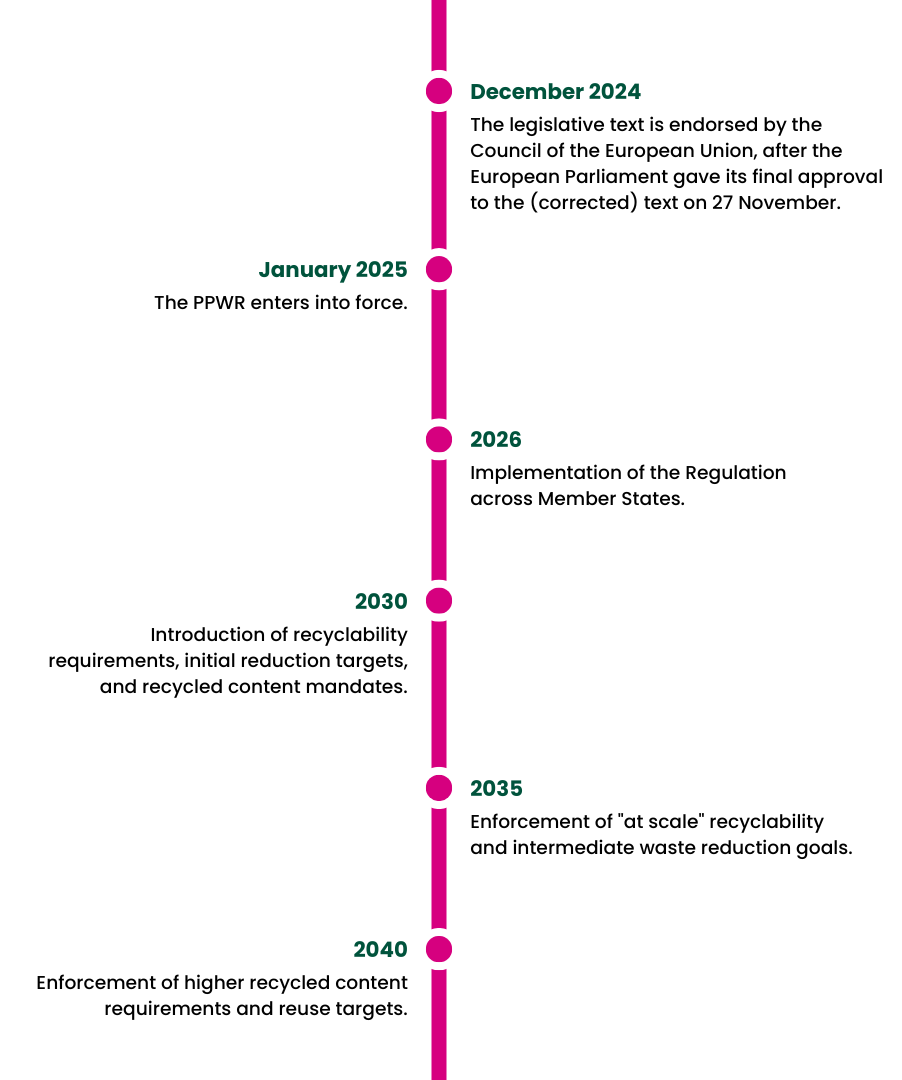In December 2024, after more than two years of hard lobbying and negotiations, the European institutions finally adopted the Packaging and Packaging Waste Regulation (PPWR), one of the missing puzzle pieces of the European Green Deal. The PPWR aims to reduce packaging waste produced by the EU and move away from linear packaging models, in line with the EU’s ambition to transition to a circular economy. After its recent adoption, the PPWR officially enters into force in January 2025, with its implementation starting in 2026.
The PPWR sets new challenges and opportunities for businesses producing, importing, and making use of packaging, including retailers and e-commerce platforms. All these organisations will need to review their packaging portfolios and make sure that they are aligned with new requirements to ensure compliance while contributing to a more sustainable future.
In this blog post, Publyon provides a deep dive into the PPWR. We will explore its purpose, scope, and main features. Most importantly, we will highlight the impact of the PPWR on your organisation’s operations and how your business can better prepare for its implementation.
Buckle up, it’s going to be a reading packed with useful information (pun intended).
What is the Packaging and Packaging Waste Regulation?
Proposed by the European Commission in 2022, the PPWR establishes harmonised rules for packaging design, production, and disposal to prevent waste generation, increase reuse, and enhance recycling rates. It replaces the 2018 Packaging and Packaging Waste Directive, ensuring direct applicability and harmonisation across the EU without the need for national legislation. This step strengthens consistency in sustainability efforts, reducing fragmentation and uncertainty for businesses operating in multiple countries.
Central to the Packaging and Packaging Waste Regulation is setting measures in line with the EU waste hierarchy principles, which prioritise waste prevention, reuse, and high-quality recycling measures to effectively decrease the total amount of packaging waste generated each year in the EU.
The above visual is an adaptation of the visual located at this source.
Key features of the Packaging and Packaging Waste Regulation
The PPWR introduces ambitious, harmonised, and comprehensive measures to reduce packaging waste and improve sustainability. These include, for instance:
- Waste reduction goals: the PPWR sets targets to cut packaging waste by 5% by 2030, 10% by 2035, and 15% by 2040, compared to 2018 levels.
- Packaging minimisation: the PPWR imposes rules to minimise empty space and excessive materials, especially for e-commerce shipments. Other articles mandate businesses to avoid superfluous designs (such as false bottoms or double walls) and prioritise recyclability.
- Mandatory recyclability: by 2030, all packaging must be recyclable, achieving at least a “C” grade under new EU performance standards set by the Packaging and Packaging Waste Regulation itself. By 2035, packaging must be recyclable “at scale”. Recyclability will be assessed based on design, material type, and compatibility with existing recycling infrastructure.
- Recycled content targets: plastic packaging must contain a minimum proportion of recycled materials, with targets set for 2030 and higher thresholds for 2040. This provision aims to boost demand for high-quality recycled materials and increase investment in recycling infrastructure.


- Reuse targets: By 2030, certain sectors, such as takeaway, beverages and transport packaging, must implement reuse systems with specified targets. These targets aim to encourage businesses to shift away from single-use packaging and explore more sustainable alternatives.
- Chemical restrictions: The PPWR sets bans and limitations on harmful substances like PFAS and BPA in packaging to protect health and the environment.
- Unified labelling system: The Regulation mandates standardised EU-wide labels for sorting, recycling and disposal, linked to corresponding symbols, to improve consumer compliance and waste management.
- Compostable packaging standards: Compostable materials will be limited to specific use cases where they deliver clear environmental benefits, such as tea bags or coffee pods or any food-contact material difficult to separate from organic waste.

Impact of the Packaging and Packaging Waste Regulation on businesses: necessities, opportunities and challenges ahead
The Packaging and Packaging Waste Regulation will have a profound impact on manufacturers, importers, distributors, retailers, producers and e-commerce platforms, creating a need to reform your entire supply chain while offering both challenges and opportunities.
In terms of necessities, companies will need to audit their packaging portfolios, redesign products, and establish new supply chain partnerships to shift from single-use packaging and meet targets and requirements set in the legislation. As existing reusable packaging business models and reuse systems differ significantly depending on packaging type, businesses will have to research and enquire which logistical solutions best suit their needs. It is also the moment to prepare your teams and ensure your internal governance structure allows for communication of information and coordination of projects if changes to operations are needed.
In terms of opportunities, early adopters of sustainable practices and champions of circular models (for instance, packaging pooling models) may enhance their brand reputation and competitive edge by appealing to eco-conscious consumers and businesses, turning compliance into a selling point.
Finally, in terms of challenges, businesses may face potential increased costs due to initial investments in R&D, infrastructure, and compliance certification – although long-term benefits may include cost savings and market differentiation. Another key challenge to look out for will be legal and financial risks linked to compliance failure. These could result in fines, market restrictions, and reputational damage.
What should businesses do to prepare for the Packaging and Packaging Waste Regulation implementation?
Although most requirements set in the Packaging and Packaging Waste Regulation will come into force in 2030, you should already secure your license to operate now. Here are actionable steps that you can take already today to ensure that your business is set up to succeed:
- Conduct a comprehensive audit: evaluate current packaging materials, recyclability, and compliance with the new requirements set by the PPWR. By requesting Publyon’s Policy Impact Scans, you will receive a roadmap for navigating complex legislation such as the PPWR and identifying risks and opportunities specific to your business. Our service provides also high-level strategic recommendations to develop a future-proof business strategy that allows your organisation to retain its license to operate.
- Invest in innovation: explore alternative materials such as biodegradable or compostable options and design for easier recycling and reuse, thus putting your business on the map as one of the key leaders in the sector for sustainable practices.
- Educate your team: train colleagues on the new Regulation’s requirements, including labelling requirements and sustainable packaging practices.
- Set up a new dedicated packaging strategy: to meet the PPWR requirements, it’s crucial to establish a dedicated circular packaging strategy that emphasises increasing the use of reusable packaging and ensuring full recyclability in your packaging portfolio.
- Monitor legislative developments: as the European Commission will finetune most of the PPWR requirements through implementing and delegated acts (known as secondary legislation), businesses should be abreast of the latest developments to ensure compliance.
- Develop a Public Affairs strategy to provide your input to the European Commission: the European Commission will look for input from the industry to ensure that the requirements laid down in the PPWR and its subsequent secondary legislation will not hamper businesses’ activities and the EU goal towards a more circular economy. Publyon provides expert advice and guidance to help you understand how to navigate secondary legislation to maximise your impact in the decision-making process.
Timeline of the Packaging and Packaging Waste Regulation

Looking Ahead
The Packaging and Packaging Waste Regulation is more than a compliance challenge—it’s a roadmap to a sustainable future. By integrating its principles into your daily operations, your business can position itself as a leader in sustainability, enhancing competitiveness while contributing to global environmental goals.
Are you ready to navigate this regulatory shift and embrace the future of packaging? The time to act is now, and Publyon is ready to support you in this new and exciting journey!
Do you want to know more?
Do you need help getting a better understanding of the Packaging and Packaging Waste Regulation and its impact on your organisation?
Fill out the form below and our team of experts will get in touch with you.





